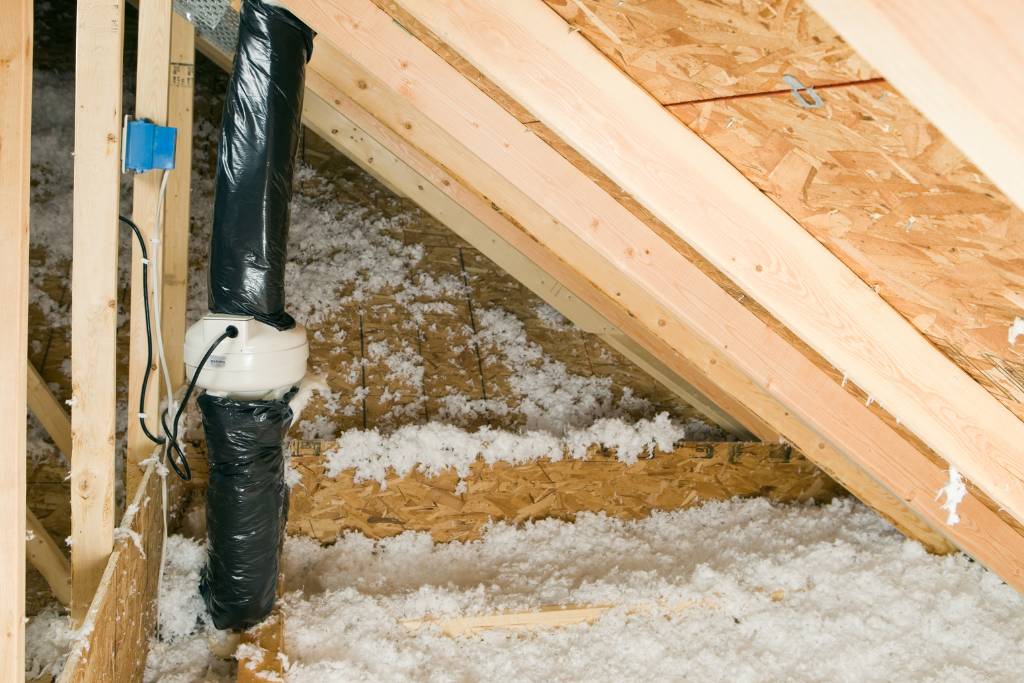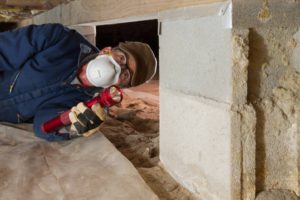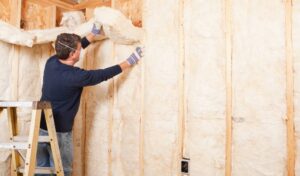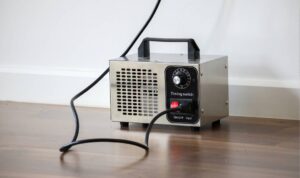Definition of knob and tube wiring
Knob and tube wiring is an early method of electrical wiring that was commonly used in homes from the late 1800s to the mid-20th century. This type of wiring consists of ceramic knobs that hold the wires in place and ceramic tubes that protect the wires as they pass through framing elements like floor joists and wall studs. The installation process involves running insulated copper wires through the ceramic tubes and securing them in place with the porcelain knobs.
The purpose of knob and tube wiring was to provide a basic electrical system for lighting and small appliances in homes. The use of porcelain knobs and tubes was significant in keeping the wiring away from the framing elements, reducing the risk of overheating and potential fire hazards.
The features that made knob and tube wiring suitable for the construction methods and electrical needs of the time include its simple and durable design, as well as its ability to handle lower electrical loads.
However, homeowners may be concerned about knob and tube wiring due to its outdated nature and potential risks such as lack of ground wiring, insulation deterioration, and potential fire hazards. As a result, many homeowners consider replacing knob and tube wiring with modern electrical systems to ensure safety.
History and legacy of knob and tube wiring
Knob and tube wiring, a method of electrical wiring used in North America from the late 19th century until the mid-20th century, has left a lasting legacy in the construction and renovation of older homes. As we delve into the history and legacy of this type of wiring, we will explore its origins, construction, and evolution over time. We will also discuss the impact of knob and tube wiring on modern electrical systems and the challenges it presents for homeowners and contractors. Additionally, we will examine the potential safety hazards associated with knob and tube wiring and the importance of proper maintenance and inspection in homes with this type of electrical system. Finally, we will consider the ongoing debate surrounding the preservation or replacement of knob and tube wiring in historic homes, as well as its relevance in today’s construction practices.
Origins of knob and tube wiring
Knob and tube wiring, an early form of electrical wiring, was commonly used in construction from the late 19th century to the early 20th century. It consisted of ceramic knobs that supported the wire and ceramic tubes that protected the wires as they passed through joists and studs. The design accommodated the construction methods of the time, allowing for easy installation and providing protection for the wires.
Knob and tube wiring was intended for light loads such as lighting and small appliances, with a typical electrical load capacity of 30-60 amps. Splices in the wiring were typically installed in open air using solder and tape, which is no longer considered safe by modern electrical standards.
In historical context, knob and tube wiring was developed during a time when electricity was a new and rapidly evolving technology. It was a significant advancement in electrical wiring at the time, allowing for safer and more convenient electrification of homes and buildings.
The clever design elements of knob and tube wiring allowed for its widespread use in construction during the late 19th and early 20th centuries, and while it has largely been replaced by modern electrical systems, some older buildings still have remnants of this early form of wiring.
Popularity during the late 19th to early 20th century
The late 19th to early 20th century saw a surge in popularity for the subject of women’s suffrage. This was largely influenced by the impact of industrialization, which led to more women entering the workforce and demanding equal rights. The changing social attitudes towards the role of women in society also played a significant role in this shift. As women began to advocate for their rights and challenge traditional gender roles, the subject gained widespread attention.
Prominent figures such as Susan B. Anthony, Elizabeth Cady Stanton, and Alice Paul played crucial roles in shaping the women’s suffrage movement during this time. Their activism and advocacy efforts helped to propel the subject into the mainstream and garner public support. Additionally, significant events such as the Seneca Falls Convention in 1848 and the passage of the 19th Amendment in 1920 were pivotal moments in the struggle for women’s suffrage.
Cultural movements like the Progressive Era also contributed to the popularity of the subject, as it brought attention to social and political reforms, including women’s rights. Overall, the convergence of industrialization, changing social attitudes, prominent figures, significant events, and cultural movements all played a part in shaping the widespread popularity of the women’s suffrage movement during the late 19th to early 20th century.
Use in residential and commercial buildings
Smart building technology has various applications in both residential and commercial buildings. In residential settings, this technology can be integrated into heating, ventilation, and air conditioning (HVAC) systems to optimize temperature control and energy efficiency. It also allows for remote monitoring and control of these systems, providing homeowners with the ability to adjust settings when away from home. Additionally, smart building technology can be utilized in energy management systems to track and analyze energy usage, leading to reduced consumption and cost savings.
In commercial buildings, the applications of smart building technology are extensive. It can be employed in HVAC systems to maintain optimal indoor air quality and temperature, as well as to reduce energy consumption through automated controls and scheduling. Furthermore, the technology can enhance security systems by integrating access control, surveillance, and monitoring capabilities. This ensures the safety of occupants and protects valuable assets.
Overall, smart building technology improves efficiency, reduces energy consumption, and enhances safety in both residential and commercial settings. By automating various building systems and providing real-time data insights, this technology offers significant benefits in terms of comfort, cost savings, and security.

How knob and tube wiring works
Knob and tube wiring is an early method of electrical wiring that was commonly used in the United States from the late 1800s to the 1940s. It consists of ceramic knobs that support the wires and ceramic tubes that protect the wires as they pass through the wood framing of a building. This system is known for its simplicity and durability. However, it also has limitations that make it insufficient for modern power needs and safety standards. Understanding how knob and tube wiring works is important for homeowners and electricians who may encounter it in older homes.
Basic components: porcelain knobs and tubes
The basic components of a knob and tube wiring system include porcelain knobs and ceramic tubes. Porcelain knobs are small, white, insulating pieces that are mounted on the surface of a structure. They are designed to anchor and support electrical wires, preventing them from sagging or coming into contact with combustible materials such as wood framing. The installation method for porcelain knobs involves driving a screw through the center of the knob into a framing member.
Ceramic tubes are used to protect and insulate the wires where they pass through framing members. The tubes are installed by drilling a hole through the wood framing and inserting the wire through the tube to prevent contact with the wood.
In addition to knobs and tubes, a knob and tube system also uses ceramic cleats to secure wires to the structure, ceramic bushings to insulate wires where they pass through walls or ceilings, and ceramic loom to protect wires at points of potential abrasion.
Overall, the purpose of these ceramic components in a knob and tube wiring system is to anchor, protect, and insulate the electrical wires, while also preventing them from coming into contact with wood framing and other combustible materials.
Separation of hot and neutral wires
To ensure continuity of the neutral conductor and avoid the need for separate fuses, modern electrical codes forbid configurations that might break continuity. This means that hot and neutral wires must be kept separate and cannot share the same circuit breaker. Additionally, ganged or “tied” circuit breakers are used to simultaneously disconnect all associated hot conductors when working with hot and neutral wires. This helps to prevent accidental contact with live wires and ensures the safety of electrical work. By following these modern electrical codes and using ganged or tied circuit breakers, the continuity of the neutral conductor can be maintained without the need for separate fuses. These practices also help to prevent electrical hazards and ensure the safety of electrical installations and maintenance.
Grounding limitations
Knob and tube wiring, commonly found in older homes, poses limitations when it comes to grounding due to the absence of a ground wire. This lack of grounding capability can have significant implications for protecting against fires and electric shock. Without a ground wire, there is no dedicated path for excess electrical current to safely dissipate, increasing the risk of electrical fires and allowing for potential electric shock hazards.
The absence of a ground wire also impacts the flow of electricity within the wiring system. In the event of a short circuit or electrical overload, the lack of a ground wire means that the excess current has nowhere to go, leading to potential overheating and fire hazards. Additionally, without a ground wire to redirect the current in the event of a fault, there is an increased risk of electric shock for homeowners and occupants.
In conclusion, the limitations of grounding in knob and tube wiring due to the lack of a ground wire pose significant risks to electrical safety. Homeowners with knob and tube wiring should be aware of these limitations and consider consulting with an electrician to address potential risks and explore options for updating their wiring system.
Safety risks associated with knob and tube wiring
Knob and tube wiring, an outdated electrical system installed in homes from the late 1800s to the early 1940s, poses several safety risks. Due to its age and design, knob and tube wiring may lack proper grounding, making homes more susceptible to fires and electric shocks. In addition, the wiring insulation can deteriorate over time, potentially increasing the risk of electrical fires. It is also important to note that knob and tube wiring may not be able to handle the electrical demands of modern appliances and electronics, increasing the risk of overloading and fire hazards. Given these safety concerns, homeowners with knob and tube wiring should consider upgrading to a more modern electrical system to ensure the safety of their households.
Lack of grounding capabilities
Knob and tube wiring, due to its age and design, often lacks proper grounding capabilities. This absence of a ground wire increases the risk of electrical fires and electrical shocks. Without a ground wire, the wiring system is unable to safely dissipate excess electrical energy, making it more susceptible to power surges and overloaded circuits. In the event of a ground fault, where the current strays from its intended path, the lack of proper grounding can result in the flow of electricity not being directed back to the main panel as it should be, further increasing the risk of electrical hazards.
Furthermore, the absence of grounding capabilities in knob and tube wiring makes it essential to properly bond all metal non-current carrying components together. This bonding plays a crucial role in preventing electrical hazards by providing a pathway for fault currents to safely return to the source.
In conclusion, the lack of grounding capabilities in knob and tube wiring poses significant risks, including electrical fires, electrical shocks, power surges, and overloaded circuits. It is crucial to address these issues to ensure the safety and functionality of the electrical system.
Inadequate insulation protection
Inadequate insulation protection for knob and tube wiring poses a significant risk of potential fire hazards. This outdated wiring system was commonly installed in homes before the 1950s and has open wiring that requires proper airflow to cool down. When covered with insulation, knob and tube wiring is unable to dissipate heat effectively, which can lead to overheating and potential fire hazards.
It is crucial to recognize that insurance companies may not provide coverage for homes with knob and tube wiring due to the increased risk of fire. Therefore, it is highly recommended to have an electrician replace knob and tube wiring with modern and safer electrical wiring. This not only reduces the risk of fire hazards but also ensures that your home is properly insulated and up to current safety standards.
Furthermore, it is important to emphasize the necessity of ensuring proper airflow around the wiring to prevent overheating and potential fire hazards. Homeowners should be aware of the risks associated with inadequate insulation protection for knob and tube wiring and take proactive measures to address this issue for the safety of their home and family.
Vulnerability to damage from rodents, pests, or renovations
Rodent and pest infestations can pose serious risks to a property, including damage to insulation, wiring, and structural elements. Rodents can chew on insulation, creating potential fire hazards and reducing the energy efficiency of a building. They can also gnaw on wiring, increasing the risk of electrical fires. Pest infestations can also cause structural damage by burrowing into walls and weakening the integrity of the building.
To mitigate these risks, it is important to seal entry points such as gaps around pipes and vents to prevent rodents and pests from entering the building. Regular pest control services can also help to manage infestations and prevent costly damage.
During renovations, it is important to take precautions to prevent damage from contractors and construction activities. Contractors should be made aware of the presence of pests and rodents, and measures should be taken to protect insulation, wiring, and other vulnerable areas. It is also crucial to inspect the property for signs of infestations before starting renovations.
By sealing entry points, scheduling regular pest control services, and taking precautions during renovations, property owners can mitigate the risks associated with rodent and pest infestations, as well as minimize the potential for damage from contractors and construction activities.
Understanding the risks: electrical shocks and fire hazards
Understanding the Risks: Electrical Shocks and Fire Hazards
When it comes to working with electricity, it is crucial to have a solid understanding of the potential risks and dangers involved. Electrical shocks and fire hazards are two primary concerns that can arise from mishandling electrical systems and equipment. By understanding the mechanisms behind these risks, as well as the preventive measures and safety protocols to mitigate them, individuals can better protect themselves and others from potentially life-threatening incidents. In this section, we will delve into the nature of electrical shocks and fire hazards, explore the key factors that contribute to their occurrence, and discuss the best practices for managing these risks in various settings. Whether you are a professional electrician, a DIY enthusiast, or simply someone who wants to ensure the safety of their home and workplace, gaining a deeper understanding of these risks is essential for maintaining a secure and hazard-free environment.
Exposed wire connections and potential for short circuits
Exposed wire connections and the potential for short circuits are critical issues in knob and tube wiring systems. These outdated wiring systems are more susceptible to these problems due to their age and the materials used.
The risks associated with exposed wire connections and potential for short circuits include electrical fires, electrical shocks, and damage to appliances and electronic devices. These issues can also lead to power outages and damage to the property.
Common causes of exposed wire connections and potential for short circuits in knob and tube wiring include deteriorating insulation, poor installation, and damage from rodents or pests. Proper measures to address and fix these issues include regular inspections and maintenance by a licensed electrician, proper insulation and protection of exposed wires, and updating the wiring system to meet current safety standards.
Addressing these issues is crucial for the safety and functionality of the electrical system in a property with knob and tube wiring. It is important to be proactive in identifying and addressing exposed wire connections and potential short circuits to prevent accidents and damage to the property.
frequently asked questions:
How does modern wiring differ from knob and tube wiring?
Modern wiring, in comparison to knob and tube wiring, uses updated materials and techniques. It typically involves the use of copper wiring, grounded outlets, and plastic insulation, ensuring a safer and more efficient electrical system.
How can I identify if my building has knob and tube wiring?
If your building was constructed before the mid-20th century, there is a possibility that it may have knob and tube wiring. A licensed electrician can conduct an inspection to identify and assess the existing wiring system.
Can I live in a building with knob and tube wiring?
While it is not illegal to live in a building with knob and tube wiring, it is strongly recommended to replace it for safety reasons. Insurance companies may also refuse coverage or charge higher premiums for buildings with this outdated wiring system.
How much does it cost to replace knob and tube wiring?
The cost of replacing knob and tube wiring can vary depending on the size of the building, accessibility of the wiring, and other factors. It is best to consult with a licensed electrician to get an accurate estimate for your specific situation.



